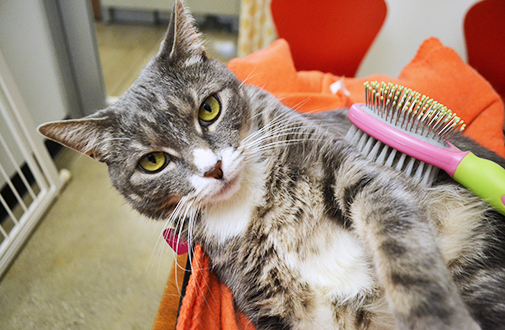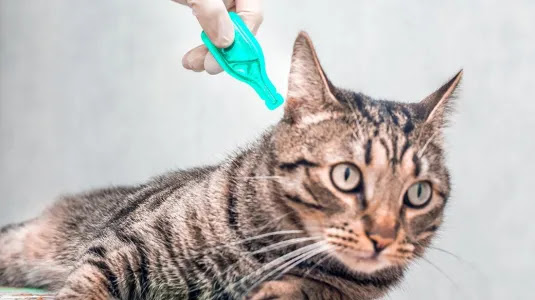how to take care of a cat? Explain in detail
Cat Vaccination Schedule
Taking care of a cat goes beyond just providing food and shelter. As a responsible cat owner, it is essential to ensure your furry friend is protected against common diseases through regular vaccinations. Vaccinations not only keep your cat healthy but also prevent the spread of contagious diseases to other cats.
Cat Grooming Tools
Grooming your cat is an important part of their overall care. It helps maintain a clean and healthy coat, prevents mats, and allows you to bond with your feline companion. To make the grooming process easier, there are various grooming tools available specifically designed for cats. Understanding the different types of grooming tools and how to use them properly is vital for effective cat care.
Common Cat Diseases
Being aware of common cat diseases can help you recognize the signs early and seek proper veterinary care. Some of the most common diseases among cats include feline respiratory infections, feline leukemia virus, feline immunodeficiency virus, and feline diabetes. It is crucial to familiarize yourself with these conditions to ensure the well-being of your cat.
Cat Behavior Problems
Cats are complex creatures with unique behaviors. However, some common behavior problems can occur in cats, such as aggression, scratching furniture, inappropriate elimination, and excessive meowing. Understanding the possible causes behind these behavior issues and implementing appropriate strategies can help address and correct such problems effectively.
How to Groom Cats
Grooming your cat not only helps them look their best but also promotes their overall health and well-being. Regular grooming sessions allow you to check for any abnormalities, such as skin irritations, fleas, ticks, or lumps.
Here are some essential steps to follow while grooming your cat:
1. Brushing: Use a suitable brush or comb to remove dead hair and prevent matting.
2. Bathing: While cats are generally clean animals and groom themselves, occasional baths may be necessary, especially for long-haired breeds.
3. Nail Trimming: Regularly trim your cat’s nails to prevent them from becoming too long and causing discomfort.
4. Dental Care: Brushing your cat’s teeth regularly helps maintain their oral health and prevents dental issues.
Cat Care Tips
Taking care of a cat involves more than just providing food and water.
Here are some essential cat care tips to ensure your furry friend remains healthy and happy:
1. Provide a Balanced Diet: Feed your cat a high-quality cat food that meets their nutritional needs and age requirements.
2. Regular Vet Check-ups: Schedule routine veterinary visits to ensure your cat receives preventive care and necessary vaccinations.
3. Provide Fresh Water: Make sure clean and fresh water is always available for your cat to drink.
4. Environmental Enrichment: Provide plenty of toys, scratching posts, and climbing structures to keep your cat mentally stimulated.
5. Litter Box Maintenance: Clean the litter box regularly to ensure proper hygiene and prevent litter box aversion.
6. Playtime and Exercise: Engage in interactive play sessions and provide opportunities for your cat to exercise and stay active.
Understanding Cat Body Language
Cats communicate through body language, and understanding their cues can help you better understand their needs and emotions.
Here are some common cat body language signals:
1. Tail Position: A relaxed tail indicates contentment, while an erect and puffed-up tail signifies fear or aggression.
2. Ears: Forward-facing ears indicate interest or alertness, while flattened ears suggest fear or aggression.
3. Purring: Cats often purr when they are content and relaxed.
4. Hissing or Growling: These vocalizations indicate fear or aggression, and it is best to give your cat space when they display these behaviors.
Cat Dental Hygiene Products
Maintaining proper dental hygiene is vital for your cat’s overall health. Neglected oral hygiene can lead to dental diseases and other health issues. Fortunately, there are various cat dental hygiene products available to help keep your feline’s teeth clean and healthy. Some of these products include toothbrushes, toothpaste, dental treats, and water additives.
How to Take Care of a Cat Palm
Cat palms, also known as Chamaedorea cataractarum, are popular houseplants known for their delicate foliage and low maintenance requirements.
Here are some tips on how to take care of a cat palm:
1. Lighting: Cat palms prefer bright, indirect light. Avoid placing them in direct sunlight as it can scorch their foliage.
2. Watering: Keep the soil consistently moist but avoid overwatering, as it can lead to root rot. Allow the top inch of soil to dry out between waterings.
3. Humidity: Cat palms thrive in humid environments. Place a humidifier near the plant or mist it regularly to increase humidity levels.
4. Temperature: Cat palms prefer temperatures between 65-75°F (18-24°C) and should be protected from drafts and extreme temperature fluctuations.
5. Fertilization: Feed cat palms with a balanced houseplant fertilizer during the growing season (spring and summer) to promote healthy growth.
How to Take Care of a Cat in Heat
Female cats go into heat, also known as estrus, multiple times a year. During this period, they may exhibit certain behaviors and physical changes.
Here are some tips on how to take care of a cat in heat:
1. Provide Comfortable Environment: Create a calm and cozy space for your cat to help reduce anxiety and stress during this period.
2. Separate from Male Cats: If you have male cats in the household, it is essential to separate them during the cat’s heat cycle to prevent unwanted pregnancies.
3. Provide Extra Attention: During heat, cats may seek more attention and affection. Spend additional quality time with your cat to provide reassurance and comfort.
4. Consult a Veterinarian: If you are considering breeding your cat, consult a veterinarian for guidance and to ensure both the male and female cats are healthy for mating.
How to Take Care of a Cat After Neutering
After neutering a cat, it is crucial to provide proper post-operative care to ensure a speedy recovery.
Here are some tips on how to take care of a cat after neutering:
1. Monitor the Incision: Keep a close eye on the incision site for any signs of infection, such as redness, swelling, or discharge. Contact your veterinarian if you notice any abnormalities.
2. Provide a Calm Environment: Create a quiet and stress-free environment for your cat to recover, away from other pets or excessive noise.
3. Prevent Licking or Chewing: Use an Elizabethan collar (cone) to prevent your cat from licking or chewing the incision, which can slow down the healing process.
4. Control Activity: Restrict your cat’s physical activity for a few days after surgery to prevent any excessive strain on the incision site. Remember, each cat is unique, and their care needs may vary. It’s important to observe and understand your cat’s individual requirements to provide the best possible care. By following these tips and guidelines, you can ensure your feline companion leads a happy, healthy, and fulfilling life.













